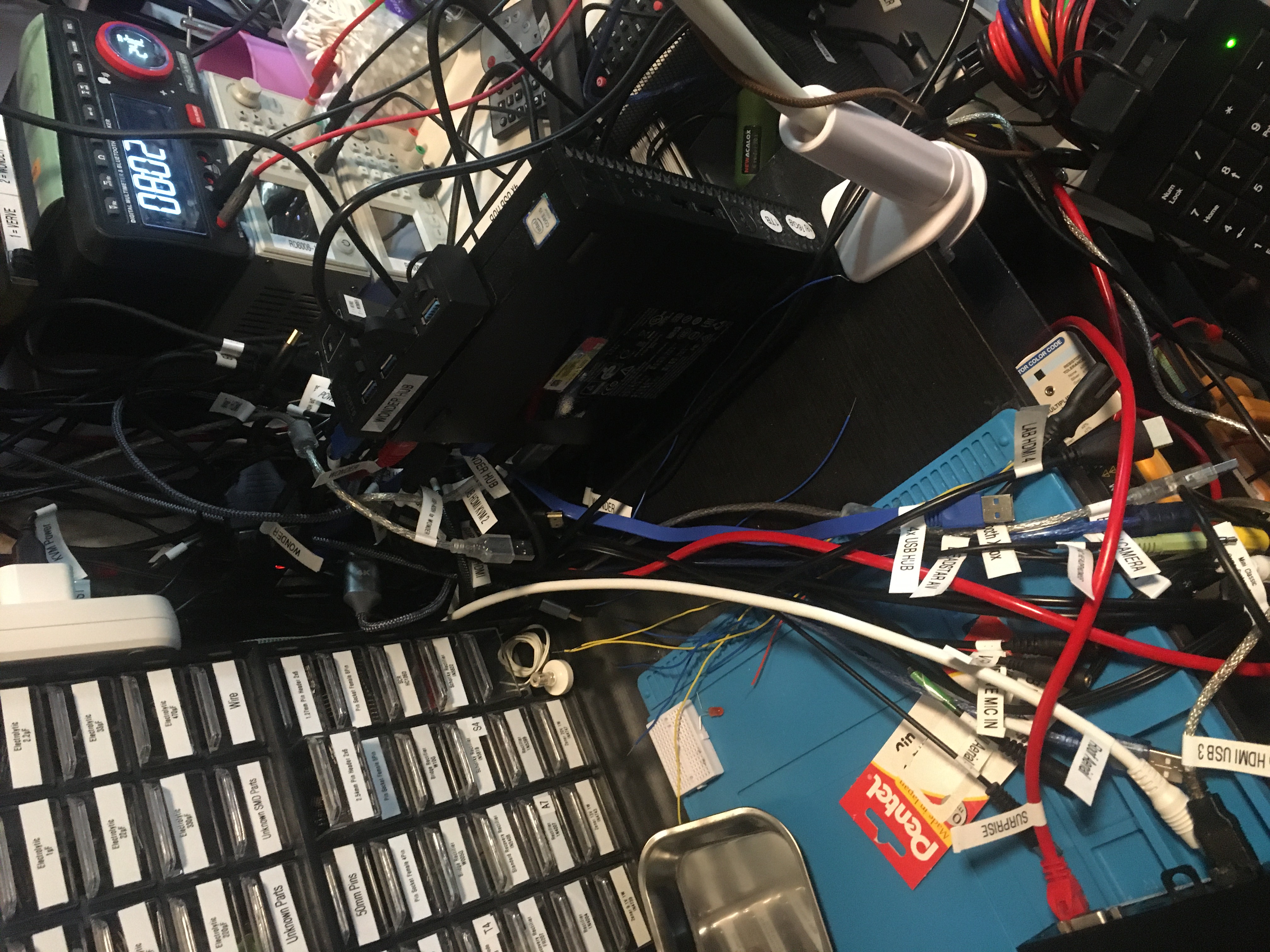This is on my agenda (but not with priority, I will circle back for this one): Learn KiCad.
Category Archives: TODO
Today’s chore
Electronics reading
I’m reading some stuff, but I’m exhausted, so off to bed, and hopefully finish this reading tomorrow:
Logic Analyzer with 1GHz Sampling Rate
Today I was pleased to discover this: DreamSourceLab DSLogic U3Pro32 USB-Based Logic Analyzer with 1GHz Sampling Rate, 2Gbits Memory, USB 3.0 Interface, 32 Channels.
There are some notes from the manufacturer over here: DSLogic Series USB-based Logic Analyzer.
It’s a logic analyzer which can operate at 1GHz that’s within my price range. I’m not rushing off to buy this thing, but it is certainly on my list.
The only other thing I have seen that compares to this logic analyzer is this RIGOL DS70304/DS70504– Digital Oscilloscope 3GHz/5GHz 4 Channel 20GSa/s 2Gpts 1000000 wfms/s which is roughly two orders of magnitude more expensive.
6 Horribly Common PCB Design Mistakes and AppCAD
Today I enjoyed watching 6 Horribly Common PCB Design Mistakes and the follow-up video Design Mistakes You Must Avoid on Your New Electronic Product.
In the first video I learned about AppCAD Design Assistant which is a free tool which boasts a broad bunch of features (and, particularly, it can help you design an antenna on your PCB):
- S-Parameter Analysis and Plotting
- Active Circuit Bias Design
- Cascade Noise and IP3 Analysis
- Transmission Line Analysis
- Signals and Systems
- Complex Math Engineering Calculator
I haven’t used AppCAD yet, but I will check it out soon.
Gonna try ‘restic’ instead of ‘borg’
QUIC Loss Detection and Congestion Control
This came up in my feed today: QUIC Loss Detection and Congestion Control. I wish I had time to read it closely! It’s about how they re-implement the TCP bits and pieces (such as congestion control) atop UDP.
ESP-IDF: Espressif’s official IoT Development Framework
Wanna check out ESP-IDF which is Espressif’s official IoT Development Framework. Have to decide if I will use Linux, Mac, or Windows, and whether I will use VSCode or Eclipse.
This looks like a good place to start: https://github.com/espressif/esp-idf
The Problems of Philosophy, further reading
At the end of The Problems of Philosophy, Bertrand Russell says:
The student who wishes to acquire an elementary knowledge of
philosophy will find it both easier and more profitable to read some
of the works of the great philosophers than to attempt to derive an
all-round view from handbooks. The following are specially
recommended:
- Plato: Republic (especially Books VI and VII)
- René Descartes: Meditations on First Philosophy
- Baruch Spinoza: Ethics
- Gottfried Wilhelm Leibniz: Monadology
- George Berkeley: Three Dialogues Between Hylas and Philonous
- David Hume: An Enquiry Concerning Human Understanding
- Immanuel Kant: Prolegomena to Any Future Metaphysics
Switching diodes and rectifying diodes
I had an envelope full of SMD diodes arrive today. Three different types in three different sizes, so nine bundles. Unlabeled!
I’m not sure what they were thinking at the shop. I got them from here.
I managed to figure out that the ones marked ‘S4’ were the Schottky diodes (1N5819WS). I think the ones labeled ‘T4’ are the switching diodes (1N4148WS) and the ones labeled ‘T7’ and ‘A7’ are the rectifying diodes (1N4007), but I’m not sure of that yet.
I asked ChatGPT for help and it explained how I can devise a test circuit, so that’s on my TODO list for tomorrow.

